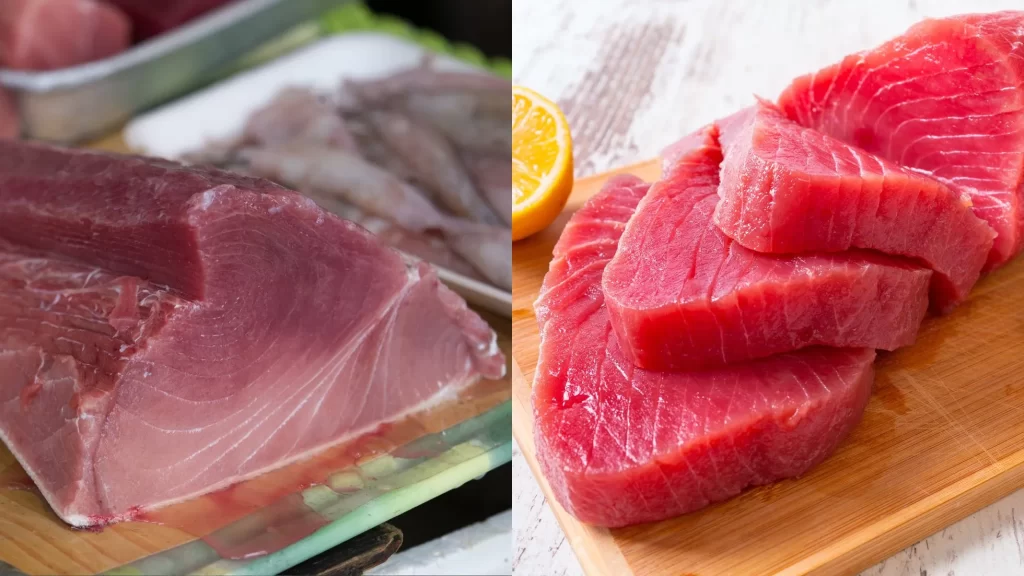“Sashimi grade” or sushi grade, is a term used to refer to the quality and freshness of fish that is suitable for making sashimi, a traditional Japanese dish consisting of thinly sliced raw fish. The term is not a regulated or standardised term, but generally, it indicates that the fish is of the highest quality and meets specific criteria for freshness, taste, and texture.
So, don’t think that just because something says “Sushi Grade” on the packaging or online that it’s been reviewed and inspected by anyone to receive that accreditation. It’s more of a marketing term that can be used to describe seafood products that tick certain attributes.
In order to be considered “sashimi grade,” fish typically needs to meet the following characteristics:
Sashimi Freshness
The fish should be very fresh and caught recently, ideally within hours or even minutes before being prepared as sashimi. Freshness is crucial for sashimi as it affects the taste, texture, and safety of the dish. This commonly means fish has been frozen at sea or at the source. This is one of the safest ways to ensure fish is transported safely for sashimi purposes.
The Taste of Sushi
The fish should have a clean, mild, and slightly sweet taste that is characteristic of high-quality, fresh fish. It should not have any off-flavours or unpleasant odours.

The Perfect Texture
The fish should have a firm and smooth texture, with a good balance between tenderness and firmness. The texture should be suitable for slicing into thin, delicate pieces without falling apart.
Sushi Safety
The fish should be handled and stored properly to minimize the risk of foodborne illnesses, as sashimi is consumed raw. This includes proper temperature control during transportation, storage, and handling, as well as adherence to food safety standards and regulations. The minimum recommended storage period for sashimi fish that has been frozen is 2 weeks at -18 degrees Celsius. This ensures that any parasites in the fish are dead and minimises the risk when consuming raw food.
If I can use your tuna for sashimi why isn’t it pink?
We’re sure you’ll recognise both images below as tuna. However, the image on the left is how tuna looks naturally when it’s being cut and portioned prior to being frozen or processed. On the right, we can see tuna that has been gassed with carbon monoxide to improve its visual aesthetics and remove the fishy smell. However, this presents some problems.

Gassed tuna is a very popular choice for sushi because of its vibrant red/pink colour. With gassed tuna, it can be incredibly difficult to identify the quality even after days in the fridge. Studies have shown gassed tuna displays no visible signs of deterioration after as many as 11 days in the fridge. It’s also not going to start smelling bad for a really long time because of the gassing process
We only sell natural tuna, frozen at the source. Although it can look purple, maroon and even brown, this is the safest way to eat tuna. The FDA does say that it’s generally safe to eat gassed tuna raw or cooked but it does become difficult to gauge how fresh the fish you’re eating is. Japan, Canada and the EU have also placed bans on the process. That’s right, Japan, the sushi capital of the world, doesn’t gas their tuna.
Sashimi Grade Summed Up
Here at Seafood by Sykes, the vast majority of our fish is portioned and flash-frozen at sea or at the source. It’s kept frozen during transit and then stored for two weeks at -18’C before the stock is available for purchase. This means that you can use our salmon, cod or tuna for sushi if you wish. We do have to emphasise that our customers do this at their own risk. While all steps have been taken to remove the risk of eating raw fish and seafood you should always consult a Doctor if you feel unwell after consumption.
Fish that is labelled or sold as “sashimi grade” typically undergoes strict quality control measures by suppliers and manufacturers and is handled with care to maintain its freshness and quality. But it is important to note that the term “sashimi grade” is not standardised or an official accreditation and may vary depending on the location and specific supplier. To ensure the safety and quality of fish for making sashimi, it is recommended to purchase from reputable sources and follow proper food handling and storage practices.
